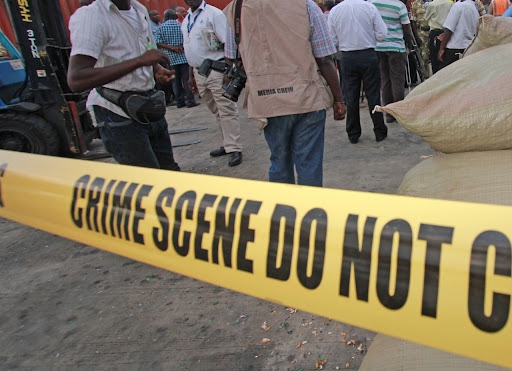The pilot of the helicopter that crashed into Lake Nakuru two years ago was drunk, the official investigation report has shown.
The helicopter was carrying Nakuru Senator Susan Kihika's communications team when it crashed on October 21, 2017.
All the five people aboard, including the pilot, perished.
"The investigation findings revealed that the accident was attributed to collision with the water due to loss of situation awareness by the pilot who was under the influence of alcohol," the 42-page report read.
The report said the pilot, Captain Apollo Malowa, failed to recognise the loss of altitude, excessive banking to the left and the obstacle proximate to the aircraft.
"The results indicated the presence of alcohol (ethanol) at a concentration of 41mg per 100ml of the sample," read by report compiled by chief investigator of accidents Martyn Lunani.
That's equivalent to a minimum of one half-litre bottle of beer or two tots of whiskey.
The report recommended KCAA ensure all Air Operators Certificate Holders to conduct employee background checks when hiring to protect the safety of the organisations, employees and passengers.
The passengers were Veronicah Muthoni and Anthony Kipyegon, whose bodies were recovered after 25 days, and Sam Gitau and John Mapozi, whose remains were never found.
The accident involved the AS350 type of helicopter, registration 5Y-NMJ, operated by Flex Air Limited. It took off at about 0337 hours and crashed into Lake Nakuru after seven minutes and 38 seconds.
The pilot’s blood samples were taken from the liver, gall bladder, stomach and kidney for toxicological screening.
There was no other chemically toxic substance detected in the post mortem specimens.
The Kenya Civil Aviation Authority bans the use of narcotics or intoxicating liquor.
The laws state that a person shall not act or attempt to be a crew member of an aircraft within eight hours after consumption of alcohol, under influence of alcohol, while using drugs that affects the person’s faculties in any way contrary to the safety or while having a blood-alcohol concentration of 0.04 per cent.
A KAA notice on the fitness of flight crew members states that the pilot in command shall not commence a flight if he is incapacitated from performing flight duties by any cause such as injury, sickness, fatigue or the effects of alcohol or drugs.
The authority may prohibit any person from operating an aircraft if he or she tests positive for drug or alcohol usage.
On arrival at a hotel that morning at 0320 hours on October 21, 2017, the pilot boarded the helicopter with four passengers.
Shortly thereafter, he started the engine , was airborne and made a few circuits before heading towards Lake Nakuru.
the purpose of the flight was not immediately established as the pilot never talked to anybody on arriving at the hotel.
The report said the operator of the helicopter also did not know the purpose of flying around the lake other than the pre-planned scheduled flight to Mau Narok, 42km from Nakuru town.
It said it was rumoured the pilot had planned to fly around the lake for sightseeing before heading back to the hotel.
At 0341 hours a witness saw the helicopter flying low towards the lake.
"She saw the helicopter fly over the lake, then it made a turn on the southern end. It then made a left turn and flew back on the eastern side of the lake before it plunged into the water," the report read.
The witness immediately alerted nearby Kenya Wildlife Service security officials.
According to the GPS download obtained from the laboratory, the helicopter was flown at a very low altitude between 0339 hours and 0344 hours. For instance, at 0340 hours, the helicopter was captured flying 357 feet above ground level.
At 0341 hours it was at 861ft above the lake. At 0344 hours it was 69ft above the lake.
The helicopter submerged and sank to the bottom of the lake, which was about eight metres deep.
Only fragments of the helicopter and fuel spillage were noticeable moments later.
It took more than 25 days to locate the wreckage and recover three bodies of persons onboard.
(Edited by V. Graham)











